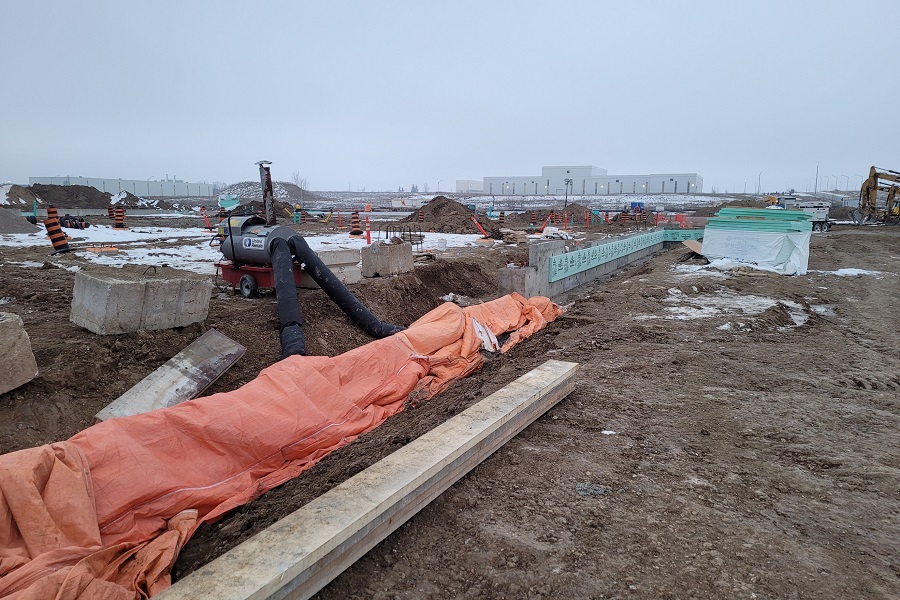Industrial sector red hot and rolling
A strong industrial market is here for the foreseeable future, says CBRE; office and retail markets in “wait-and-see” mode
Photo: Aspire Food Group is building a 100,000-square-foot cricket processing facility near Veterans Memorial Parkway and Highway 401
FAR FROM SLOWING down amid the pandemic, London’s industrial real estate market has remained hot, managing to avoid the worst fears about the pandemic, according to a recent commercial market report from commercial real estate services firm, CBRE.
“[London] industrial investment is really strong,” says Ted Overbaugh, CBRE senior vice president and managing director. “I think we’re on a strong run for probably the next few years.”
A couple of factors were singled out by Overbaugh to explain the continued strength, even at a time when downtown commercial real estate — offices and retail stores — remains in wait-and-see mode.
“Land cost here versus other markets, and the availability of land,” are both part of it, explains Overbaugh, as is the “pretty good labour pool here.”
“I look back to 2008 when we got hit hard in the auto sector ― the industrial market took a real blow. That was my fear going into this downturn, but in fact it’s been the opposite” ―Ted Overbaugh
As a result, companies pretty much across the industrial spectrum, from food-and-beverage processors to manufacturers of various sizes have been snapping up industrial units, while the growth in online shopping is pushing up demand for local warehouse space. And that demand is expected to get more competitive, Overbaugh predicts, as there’s been a slowdown in speculative developments in the city.
“I look back to 2008 when we got hit hard in the auto sector ― the industrial market took a real blow,” recalls Overbaugh. “That was my fear going into this downturn, but in fact it’s been the opposite.”
CBRE’s report highlighted a dwindling supply for industrial space, however. The strong market over the last couple years has led to “increases to net rental rates are expected to continue for the foreseeable future,” the report found.
Story Continues Below
The industrial availability rate in London is forecasted to drop to below two per cent in 2021, while net asking rents are expected to jump to $6.70 per square foot compated to $6.17 in 2020.
The footing is less stable elsewhere in the commercial real estate market, however, with so much uncertainty hanging over offices and downtown retail space. The forecasted downtown office vacancy rate for 2021 is 20.1 per cent, up from 16.4 per cent a year earlier, while average downtown Class A rents are forecasted to drop to $13.90 per square foot from $14.06 in 2020.
“There’s this big question of how and when and what does the return to work look like,” says Overbaugh. “I don’t think every business has figured that out yet. Everyone’s taking a step back.”
Overbaugh says that he doesn’t believe London will see a real estate apocalypse downtown — a fear, at various points through the pandemic, that work from home would be a permanent fixture for the post-Covid economy — but that it’s really too early to say what is going to happen.
Story Continues Below
“There’s going to be some disruption, for sure. There’s already downsizing happening,” he says. But he also notes that growth in the tech sector will likely be strong enough to offset some of the worst effects of space reductions.
“London’s poised for some good growth. The big sore spot is just downtown,” Overbaugh sums up.
As for what the city might do about core challenges, Overbaugh suggests, “Anyone who wants to develop downtown, support it. If anyone wants to build a high-rise downtown, support it. We need people downtown.” ![]() Kieran Delamont
Kieran Delamont

